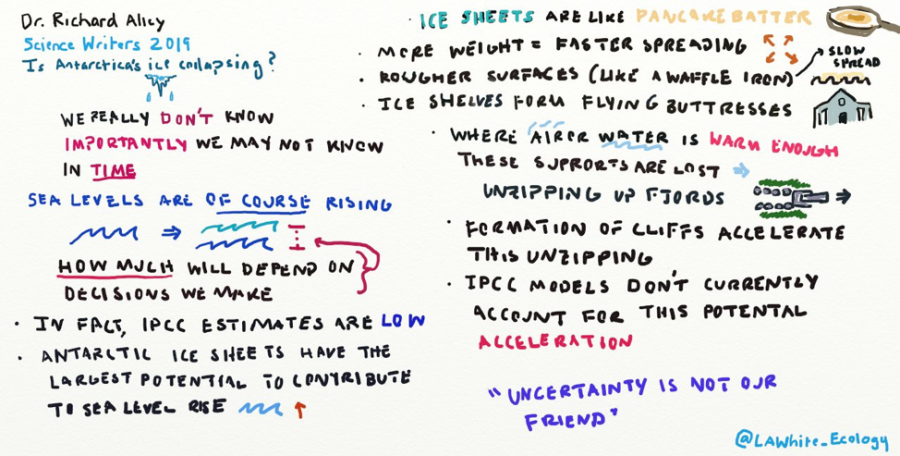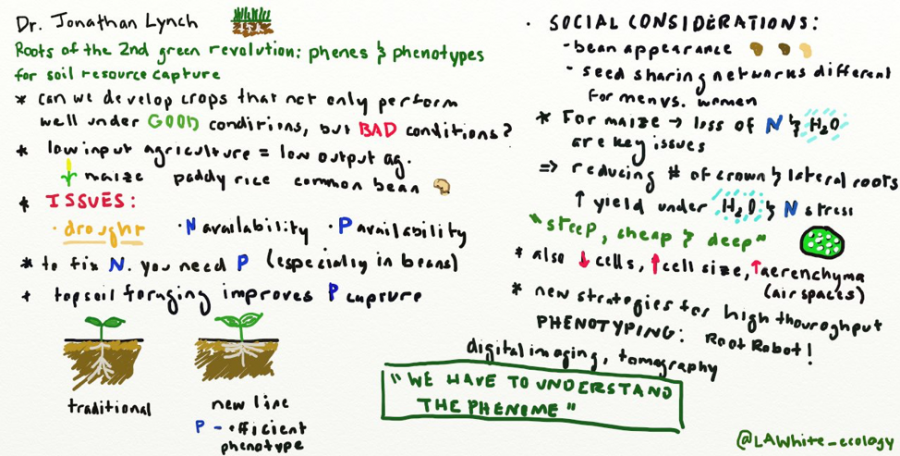
Recently, I attended my first Science Writers Conference, which was held this year at Penn State University, in State College, PA, on October 25–29, 2019. I’ve been interested in science communication for a long time and have dabbled in writing blog posts for a few scientific journals and non-profits. Despite this interest, I’ve had very little formal training in science writing, so I was excited to explore these skills in a professional context. Here are a few of my takeaways for other academics and researchers interested in communicating science:
1. Telling a good story might mean thinking differently than we’re used to.
I know many other scientists who are interested in and excited about science communication. But, crafting a story that conveys our research at large can be challenging when our training encourages us to focus on the particulars. As scientists, we are taught to couch our language in uncertainty, and when we are too close to the problem, it can be hard to connect the nitty gritty details of our everyday work back to the bigger picture.
But I learned one helpful solution is to partner with mentors who specialize in communication to get critical feedback. Identifying the key points of your story takes practice but is important! Because whether you’re presenting a scientific poster or making a pitch to an editor, finding the essential elements of a story is key to making the strongest impression.
2. We do not all have to communicate the same way.
The traditional mode for communicating science involves sending out a press release after an article is published. However, there is no one-size-fits-all model for how we should communicate our science. Some people may prefer writing articles, some may enjoy participating in podcasts, and some may even enjoy talking about science on stage with a beer in hand. The trick is to find the format that works best for your personality and schedule. Some additional avenues to explore include: The Conversation, an op-ed forum for academics to write directly to the public and news outlets; an “Ask Me Anything” thread on the Reddit r/science community; vlogging like “Your Brain on Blank” by neuroscientist Shannon Odell; or live comedy shows like “Drunk Science.”
3. Use literary devices liberally.
Some general advice that I hear over and over again as a scientist is to avoid jargon, but less often do I hear alternatives for how to communicate complex concepts in science. One of the things I enjoyed most about this conference was the opportunity to listen to experts speak on subjects outside my background. These talks were fascinating not only because I learned about new topics, but I also had a chance to see how these experts communicated their ideas to a general audience.
One of my favorite talks was by Dr. Richard Alley, Evan Pugh University Professor of Geosciences and Associate of the Earth and Environmental Systems Institute, from Penn State University. At various points throughout his talk, he compared Antarctic ice sheets to pancakes, flying buttresses, and zippers. Because of these analogies, I did not need to understand the Cauchy stress tensor to understand the general implications for accelerated ice collapse. Incorporating literary devices like similes and metaphors are powerful tools to explore for communicating our science.
Below are some other doodles that I drew during the conference that capture some of the storytelling techniques used by the presenters.

Dr. Nichole Lazar, Professor of Statistics at the University of Georgia, explained how the concept of statistical significance is facing a new reckoning in the sciences and that these ideas will continue to change through time with different disciplines having different needs.

Dr. Jonathan Lynch, University Distinguished Professor of Plant Science at Penn State University, explained how exploiting different plant phenotypes can help crops perform better under drought and nutrient limited conditions.

Dr. S. Shayam Sundar, the James P. Jimirro Professor of Media Effects and co-director of the Media Effects Research Laboratory at Penn State University, gave a talk about why fake news is so pervasive. In an ironic twist, his own press release on machine learning approaches to detect fake news morphed into its own version of fake news.